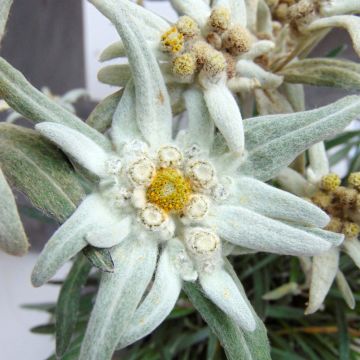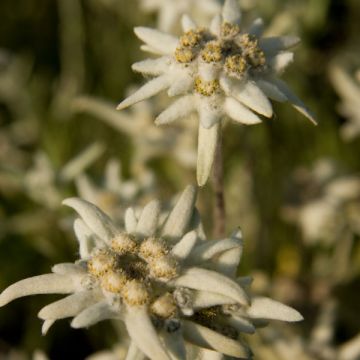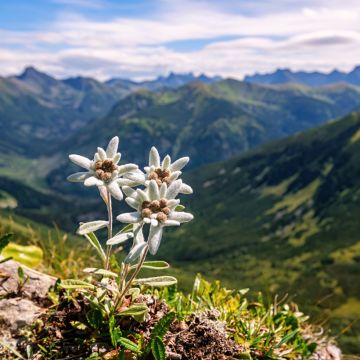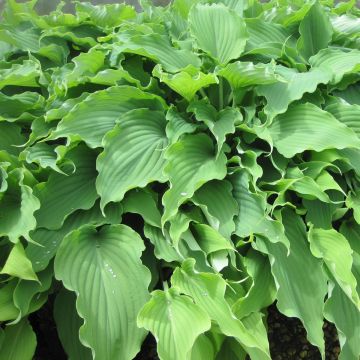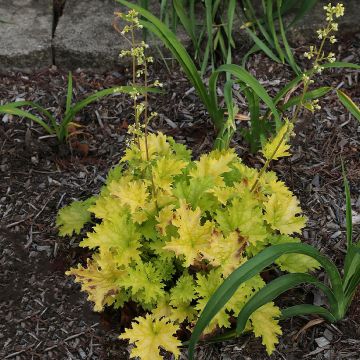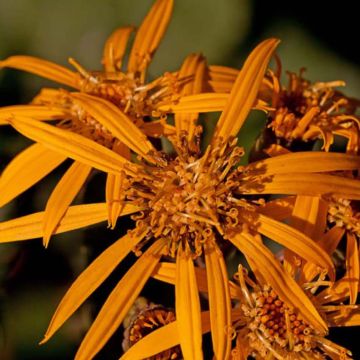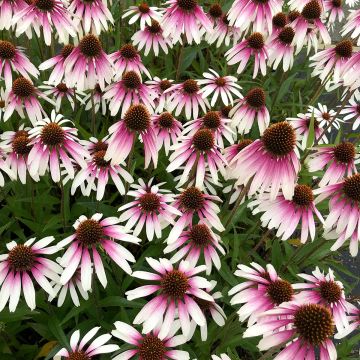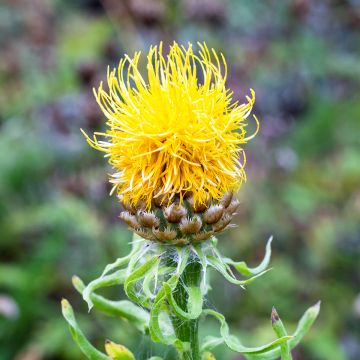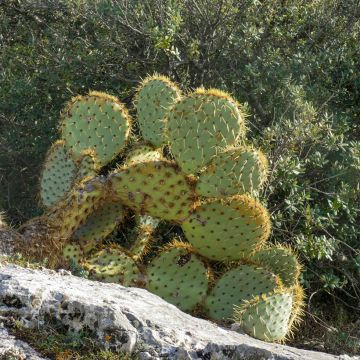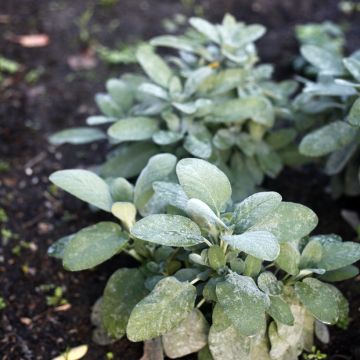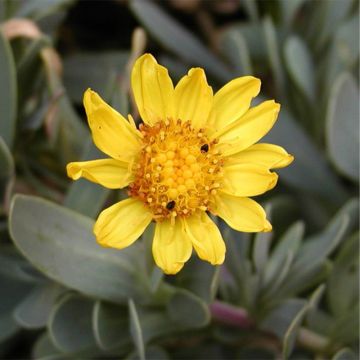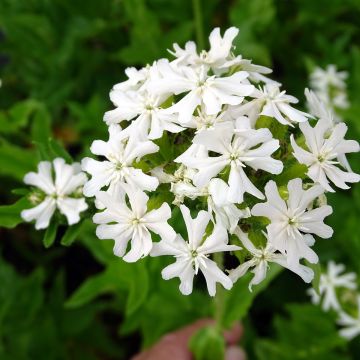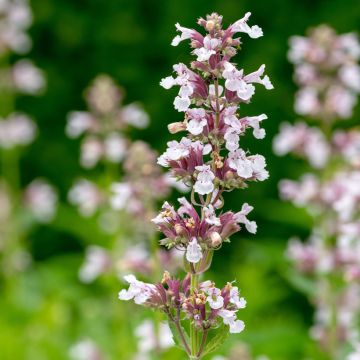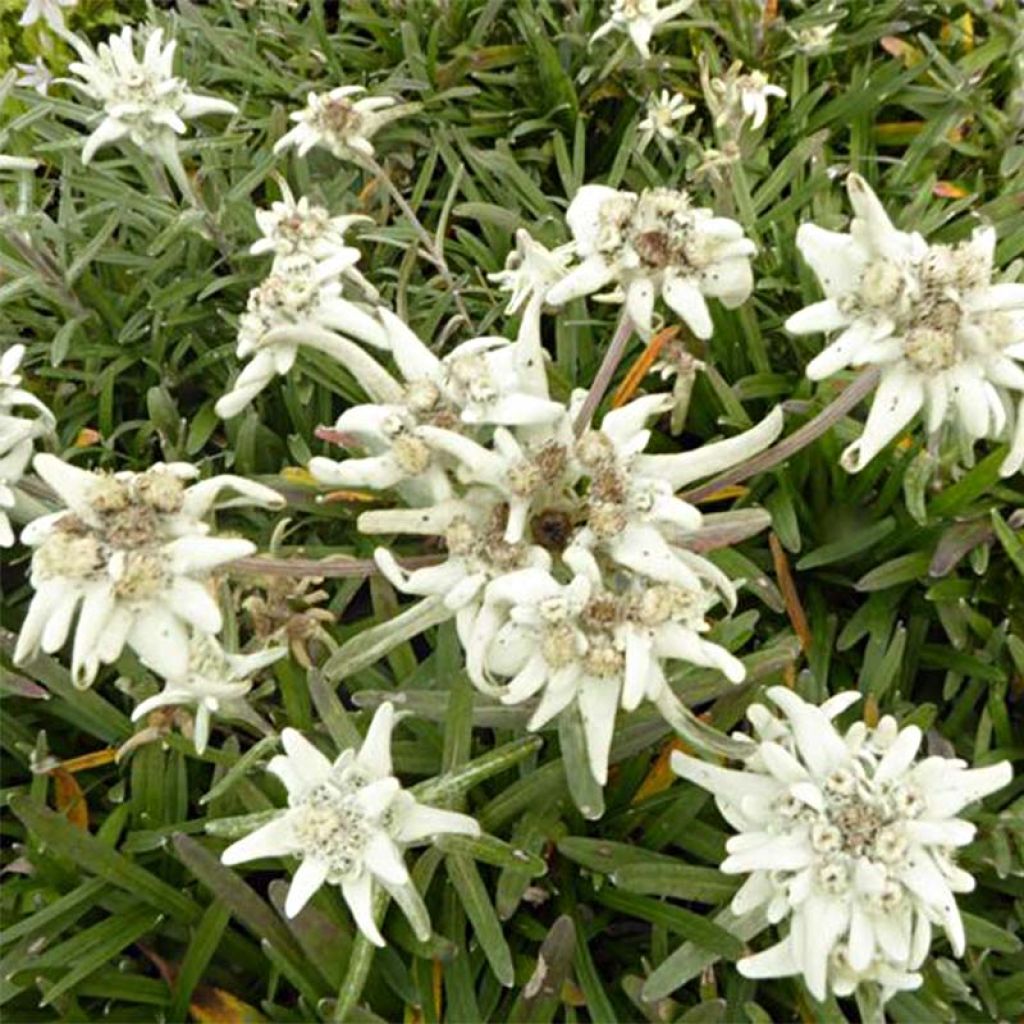

Leontopodium alpinum Mont Blanc - Edelweiss
Leontopodium alpinum Mont Blanc - Edelweiss
Leontopodium alpinum Mont Blanc
Edelweiss, Alpine edelweiss
This item cannot be shipped to the selected country
Delivery charge from €5.90
More information
Schedule delivery date,
and select date in basket
This plant carries a 12 months recovery warranty
More information
We guarantee the quality of our plants for a full growing cycle, and will replace at our expense any plant that fails to recover under normal climatic and planting conditions.
From €5.90 for pickup delivery and €6.90 for home delivery
Express home delivery from €8.90.

Does this plant fit my garden?
Set up your Plantfit profile →
Description
Leontopodium alpinum Mont Blanc distinguishes itself from the wild Edelweiss by being slightly larger, accompanied by slightly larger flowers as well. 'Snow Star' is an iconic alpine perennial with a short life. In spring or early summer, it displays star-shaped heads composed of rather insignificant cream flowers and white silvery woolly bracts. Its lanceolate dark green foliage is also covered with a protective woolly down. This plant is a gem for rockeries in damp and alpine climates.
Originally from the Alps, where it has become a symbol, Edelweiss is a small perennial plant belonging to the Asteraceae family. Today, it is rare and protected in its natural habitat. The 'Mont Blanc' cultivar forms a round cushion-like clump, adorned with evergreen foliage, not exceeding 20 to 25 cm (8 to 10in) in height and 15 cm (6in) in width. To protect itself from ultraviolet rays, which are intense at high altitudes, as well as from cold temperatures, this plant is covered with a woolly down that not only covers its linear leaves, but also the leaflets that surround a compound core of tiny yellowish flower heads. This foliage may be more or less deciduous or evergreen in winter depending on the climate (deciduous in the mountains and semi-evergreen to evergreen in milder climates). Flowering occurs from May to July. Adorned with silver, the symbolic Mont Blanc Edelweiss, offers an unforgettable sight and promises happiness and prosperity. The flower is mainly pollinated by flies, as its nectar is rich in essential amino acids for their metabolism. Fresh seeds easily germinate in favourable climates and soils.
To successfully cultivate the Mont Blanc Edelweiss, one should imitate nature: this plant thrives in well-drained soil of rockeries, in cool climates, on rather calcareous soil, in full sun or partial shade. It can be associated with other mountain plants such as Campanula portenschlagiana, Aethionema x Warley Rose, Azorella trifurcata, Cyclamen coum, Globularia cordifolia, and the perennial Geranium cinereum.
Properties:
Edelweiss is used in folk medicine to relieve abdominal pain, angina, bronchitis, diarrhea, or dysentery. The cosmetic industry uses it for its powerful antioxidant properties.
Report an error about the product description
Leontopodium alpinum Mont Blanc - Edelweiss in pictures
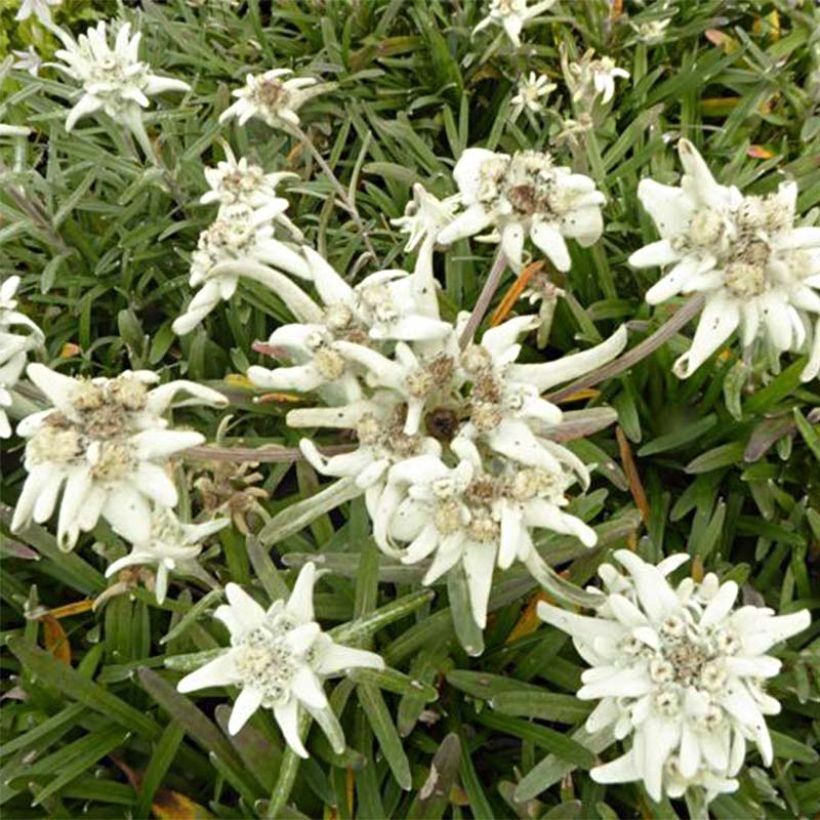

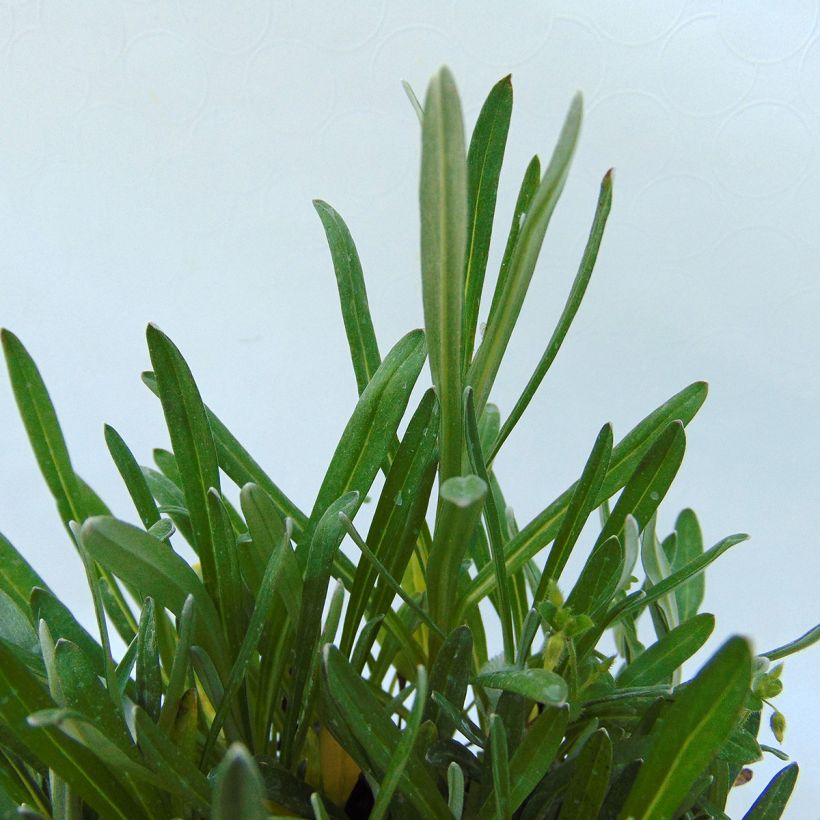

Flowering
Foliage
Plant habit
Botanical data
Leontopodium
alpinum
Mont Blanc
Asteraceae
Edelweiss, Alpine edelweiss
Alps
Other Edelweiss - Leontopodium
Planting and care
Plant your Leontopodiums in full sun, in neutral or chalky soil, even rocky soil, which is well-drained: the only true enemy of the edelweiss is excess moisture, especially in winter. Add a good amount of gravel or coarse sand to your soil to improve drainage. In rock gardens, water sparingly. In pots, water regularly but not excessively during the growing season, as it needs some moisture. In autumn, place your pots in a sheltered position away from rain (under an awning, for example).
Planting period
Intended location
Care
-
, onOrder confirmed
Reply from on Promesse de fleurs
Summer flowering perennials
Haven't found what you were looking for?
Hardiness is the lowest winter temperature a plant can endure without suffering serious damage or even dying. However, hardiness is affected by location (a sheltered area, such as a patio), protection (winter cover) and soil type (hardiness is improved by well-drained soil).

Photo Sharing Terms & Conditions
In order to encourage gardeners to interact and share their experiences, Promesse de fleurs offers various media enabling content to be uploaded onto its Site - in particular via the ‘Photo sharing’ module.
The User agrees to refrain from:
- Posting any content that is illegal, prejudicial, insulting, racist, inciteful to hatred, revisionist, contrary to public decency, that infringes on privacy or on the privacy rights of third parties, in particular the publicity rights of persons and goods, intellectual property rights, or the right to privacy.
- Submitting content on behalf of a third party;
- Impersonate the identity of a third party and/or publish any personal information about a third party;
In general, the User undertakes to refrain from any unethical behaviour.
All Content (in particular text, comments, files, images, photos, videos, creative works, etc.), which may be subject to property or intellectual property rights, image or other private rights, shall remain the property of the User, subject to the limited rights granted by the terms of the licence granted by Promesse de fleurs as stated below. Users are at liberty to publish or not to publish such Content on the Site, notably via the ‘Photo Sharing’ facility, and accept that this Content shall be made public and freely accessible, notably on the Internet.
Users further acknowledge, undertake to have ,and guarantee that they hold all necessary rights and permissions to publish such material on the Site, in particular with regard to the legislation in force pertaining to any privacy, property, intellectual property, image, or contractual rights, or rights of any other nature. By publishing such Content on the Site, Users acknowledge accepting full liability as publishers of the Content within the meaning of the law, and grant Promesse de fleurs, free of charge, an inclusive, worldwide licence for the said Content for the entire duration of its publication, including all reproduction, representation, up/downloading, displaying, performing, transmission, and storage rights.
Users also grant permission for their name to be linked to the Content and accept that this link may not always be made available.
By engaging in posting material, Users consent to their Content becoming automatically accessible on the Internet, in particular on other sites and/or blogs and/or web pages of the Promesse de fleurs site, including in particular social pages and the Promesse de fleurs catalogue.
Users may secure the removal of entrusted content free of charge by issuing a simple request via our contact form.
The flowering period indicated on our website applies to countries and regions located in USDA zone 8 (France, the United Kingdom, Ireland, the Netherlands, etc.)
It will vary according to where you live:
- In zones 9 to 10 (Italy, Spain, Greece, etc.), flowering will occur about 2 to 4 weeks earlier.
- In zones 6 to 7 (Germany, Poland, Slovenia, and lower mountainous regions), flowering will be delayed by 2 to 3 weeks.
- In zone 5 (Central Europe, Scandinavia), blooming will be delayed by 3 to 5 weeks.
In temperate climates, pruning of spring-flowering shrubs (forsythia, spireas, etc.) should be done just after flowering.
Pruning of summer-flowering shrubs (Indian Lilac, Perovskia, etc.) can be done in winter or spring.
In cold regions as well as with frost-sensitive plants, avoid pruning too early when severe frosts may still occur.
The planting period indicated on our website applies to countries and regions located in USDA zone 8 (France, United Kingdom, Ireland, Netherlands).
It will vary according to where you live:
- In Mediterranean zones (Marseille, Madrid, Milan, etc.), autumn and winter are the best planting periods.
- In continental zones (Strasbourg, Munich, Vienna, etc.), delay planting by 2 to 3 weeks in spring and bring it forward by 2 to 4 weeks in autumn.
- In mountainous regions (the Alps, Pyrenees, Carpathians, etc.), it is best to plant in late spring (May-June) or late summer (August-September).
The harvesting period indicated on our website applies to countries and regions in USDA zone 8 (France, England, Ireland, the Netherlands).
In colder areas (Scandinavia, Poland, Austria...) fruit and vegetable harvests are likely to be delayed by 3-4 weeks.
In warmer areas (Italy, Spain, Greece, etc.), harvesting will probably take place earlier, depending on weather conditions.
The sowing periods indicated on our website apply to countries and regions within USDA Zone 8 (France, UK, Ireland, Netherlands).
In colder areas (Scandinavia, Poland, Austria...), delay any outdoor sowing by 3-4 weeks, or sow under glass.
In warmer climes (Italy, Spain, Greece, etc.), bring outdoor sowing forward by a few weeks.

































